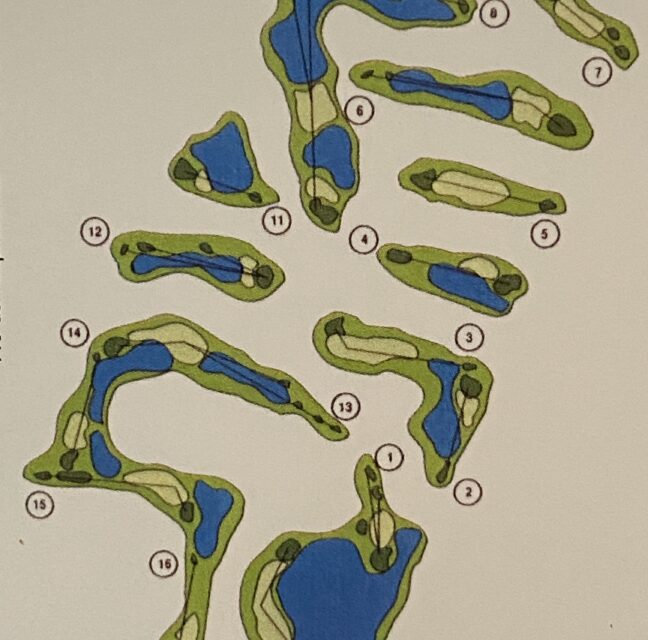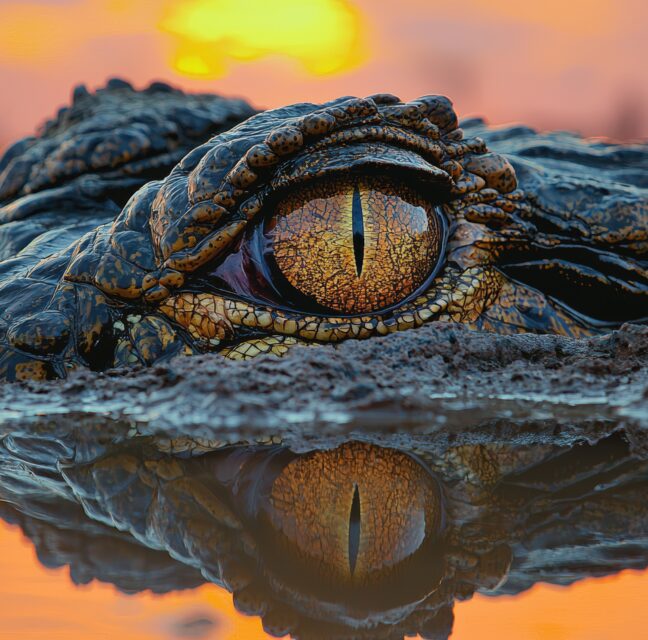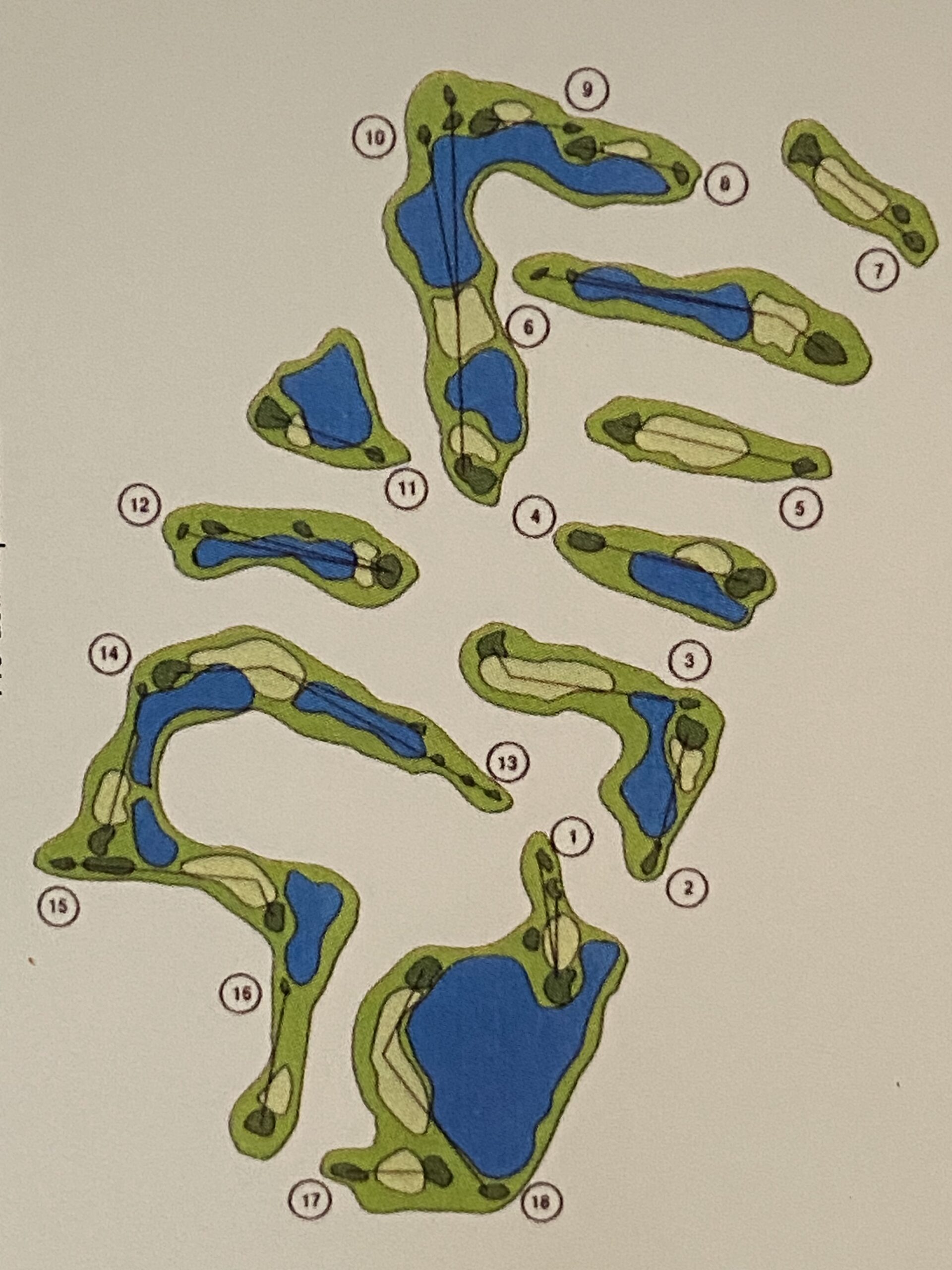
The Sabal Springs Golf Course
On consecutive Sundays in April, volunteers from both the Women’s and Men’s Sabal Springs Golf Associations showed up in force to provide a guided tour to residents of our golf course. The first guided tour, last spring, was so successful that an encore performance was requested and was gladly undertaken by dozens of Sabal Springs golfers who have extensive knowledge of the course and are rightly proud of what our links offer—a well-maintained 18-hole course replete with challenging features. For example, water comes into play vis-à-vis either a lake or a swale ready and waiting to swallow an errant shot on 13 of the 18 holes. In addition, 12 holes on the course have various sand traps and some have multiple ones.
For many, this was their first look at what happens outside their back doors and lanais and to get a feel for the beautiful course we have the pleasure of calling ours. And, let’s be honest, a peak at our neighbors’ yards and lanais we wouldn’t otherwise get a chance to see.
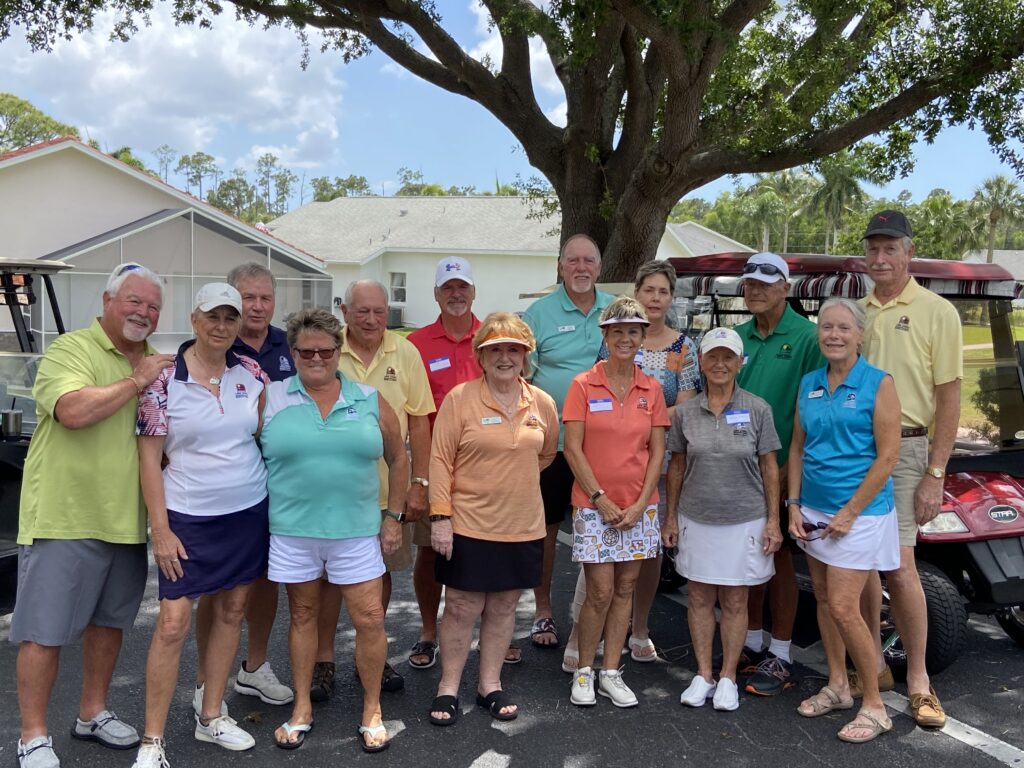
Thanks to all of the volunteers who took to the links on consecutive Sundays without their clubs to provide an insider’s expert take on the Sabal Springs Golf Course.

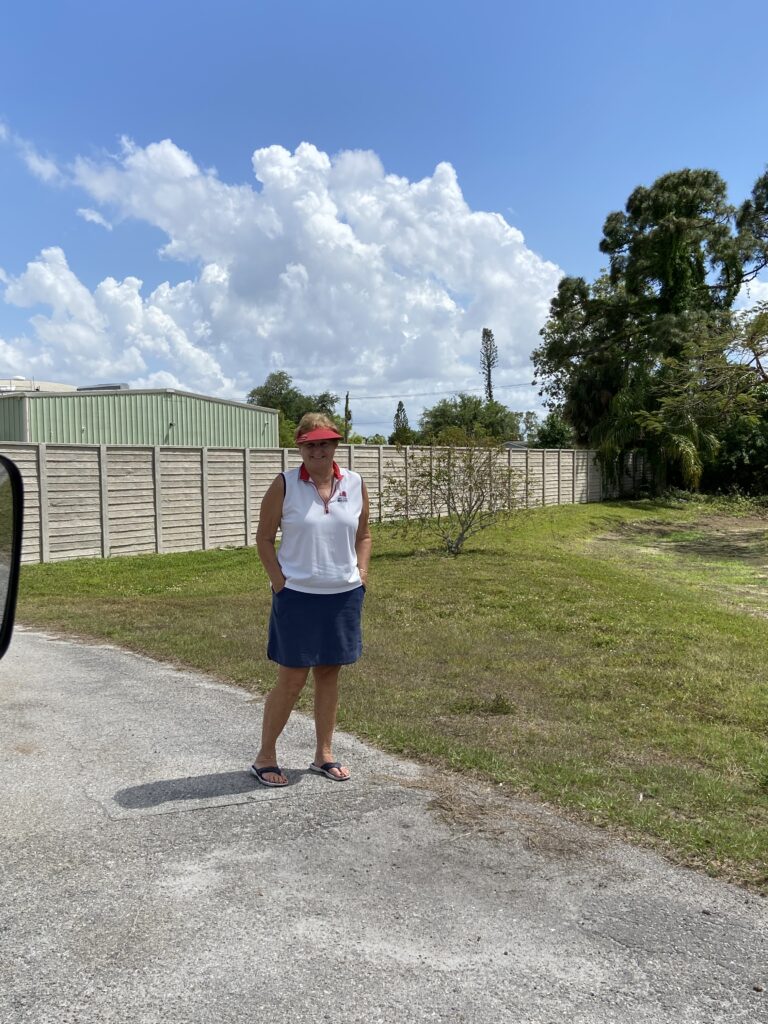

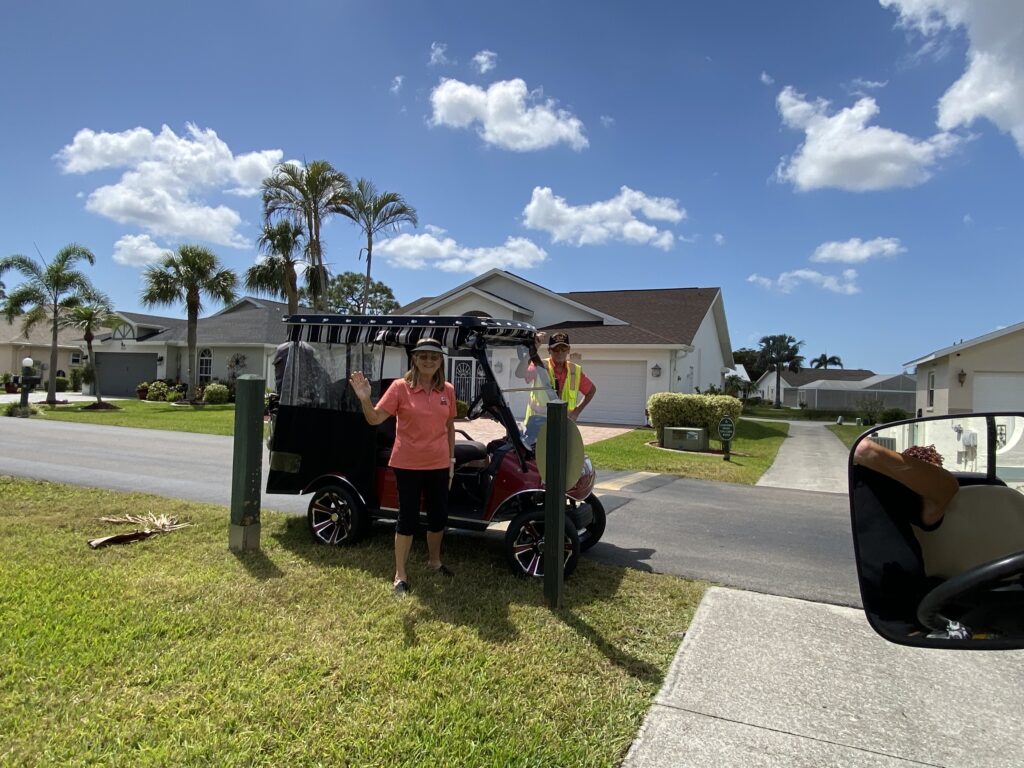
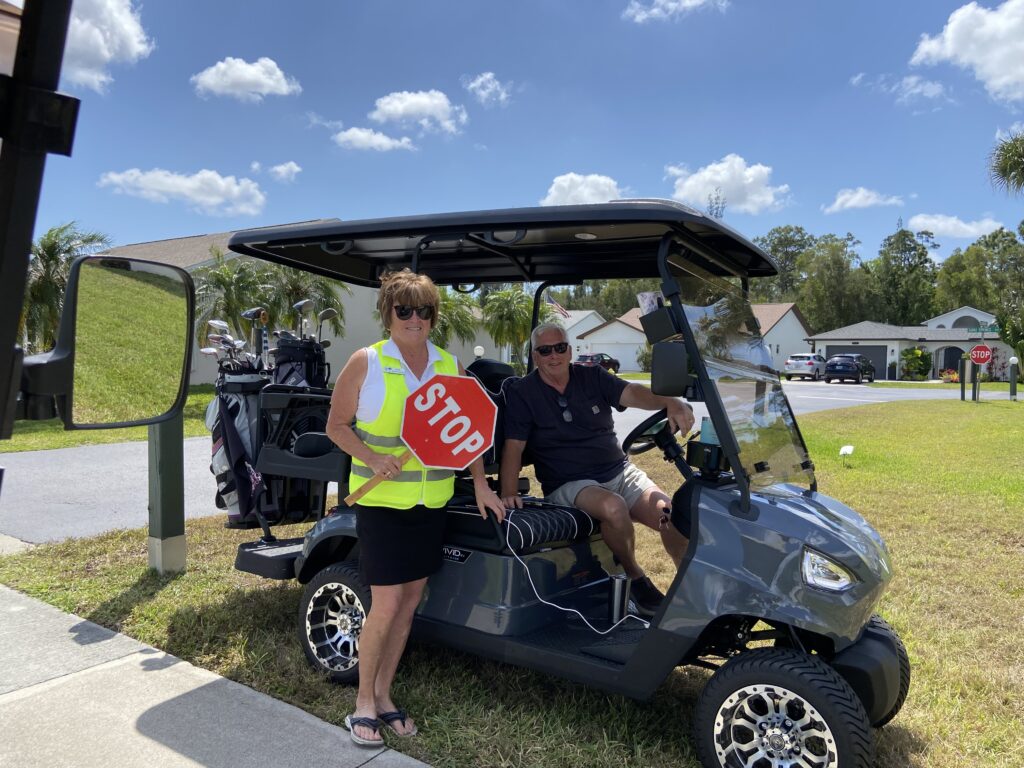
Cheers to the many volunteers who protected the guided tour at the many crossing points along the route.

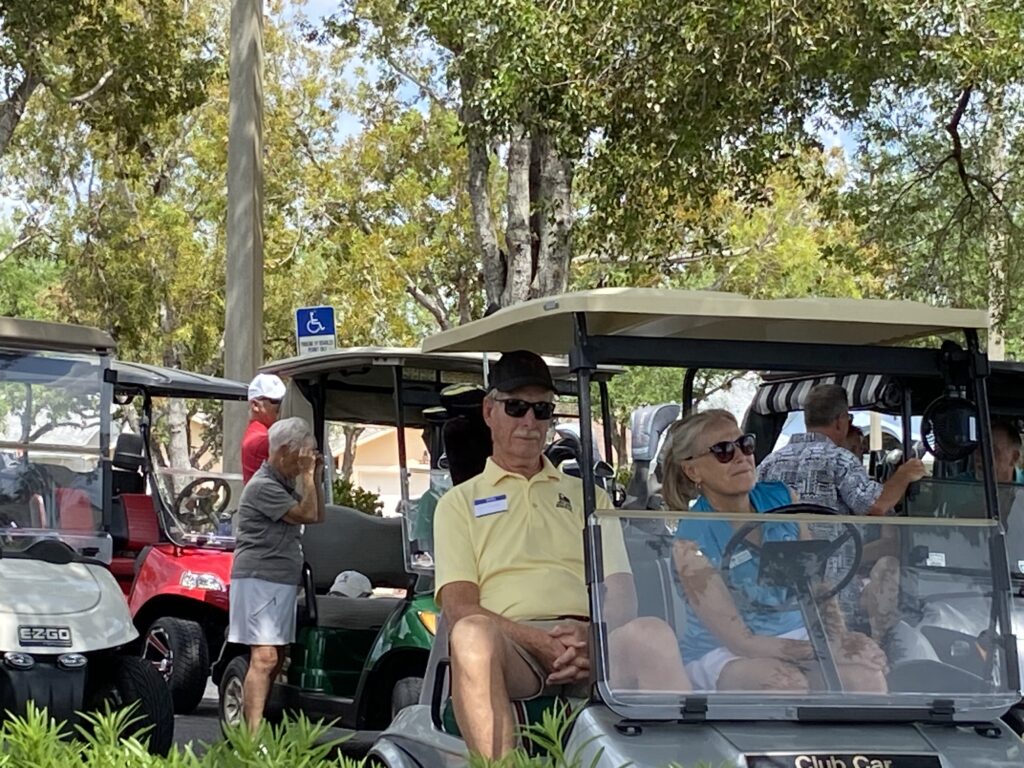
Dozens of Sabal Springs residents took advantage of the unique opportunity to view the course.
With gratitude to Loretta Gehman who created the Golf Course Tour talking points, here is an overview of the Sabal Springs Golf Course.
Each tee box, the area where the golfers tee up their ball, has eight small colored balls in four different colors. Those colors signify where each level of golfer will tee off on that hole. The blue set are for the men who hit a longer ball, usually used by our younger generation or grandchildren. The white set are where most of our gentlemen play. The yellow are for the gentlemen who are hitting less distance and, finally, the red are used by the ladies.
The flags, or as they are sometimes referred to as the pins, are also different colors. A red flag indicates the hole is toward the front of the green, the white flags are placed in the middle area of the green, and the blue flags are at the back of the green. These different colors help the golfer decide which of the clubs he or she has in the bag will be the best to use on that particular hole on that particular day. The hole placements are changed regularly and are done in a red, then white, then blue pattern. So, if hole No. 1 is in a white flag configuration, then hole No. 2 is blue and hole No. 3 is red, et cetera.

Hole No. 1 is a par-3 with the tee box next to the clubhouse. It offers a beautiful view, and water is in play to challenge you right out of the box.
Hole No. 2 is another par-3, slightly longer than No. 1, again with water in play and a sand trap to contend with.
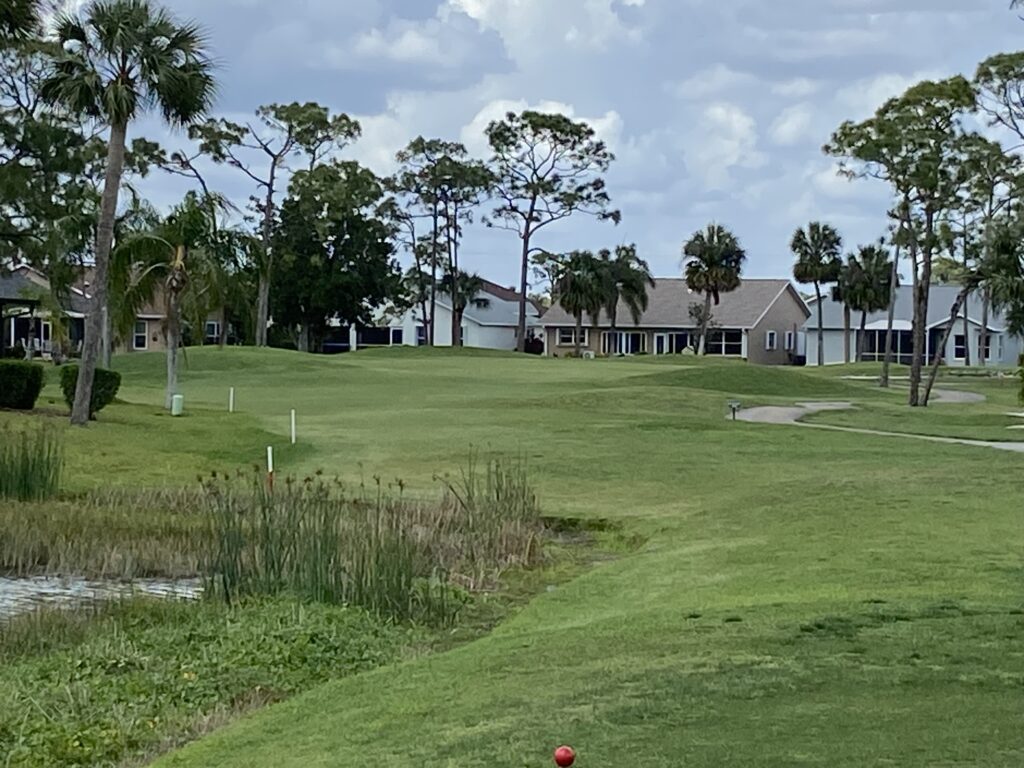
Hole No. 3 is the first of the six par-4 holes. This hole is designed with what is referred to as a “dogleg” configuration, in other words, there is a sharp turn to the green, in this instance it is a dogleg right. This design prevents the golfer from seeing where the actual hole has been placed that day. This hole is renowned for balls lost in the trees or hitting the trees and becoming very difficult to find.
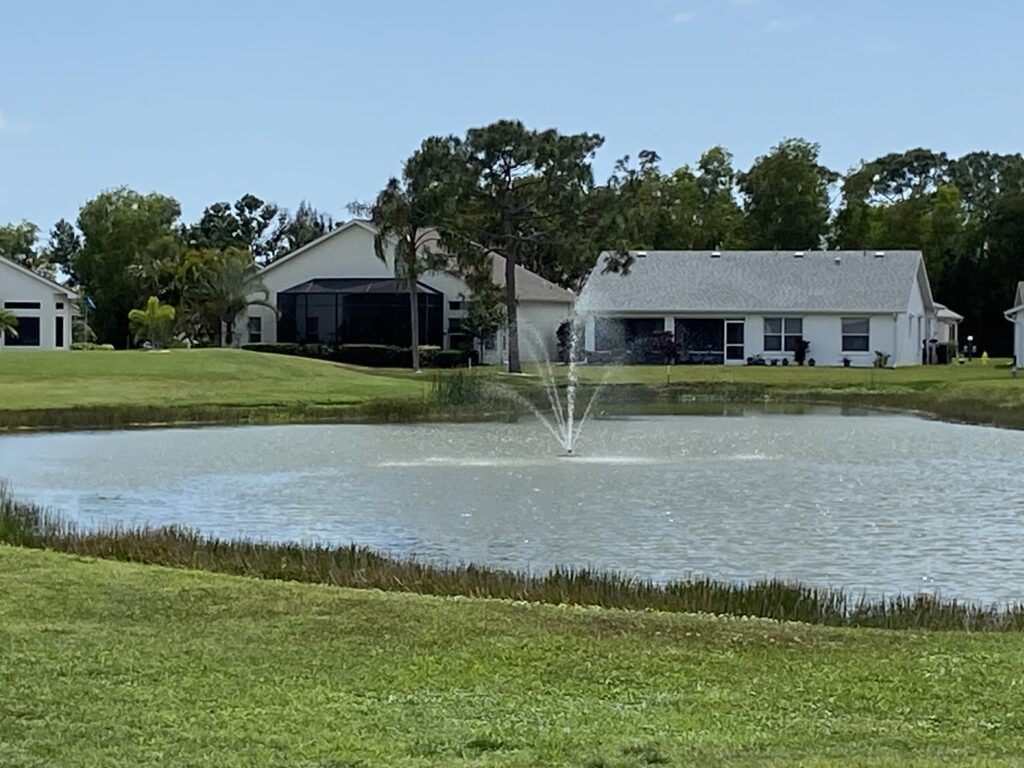
Hole No. 4 is one of the shorter holes on the course, but it involves water and sand traps enough to scare anyone who plays it.
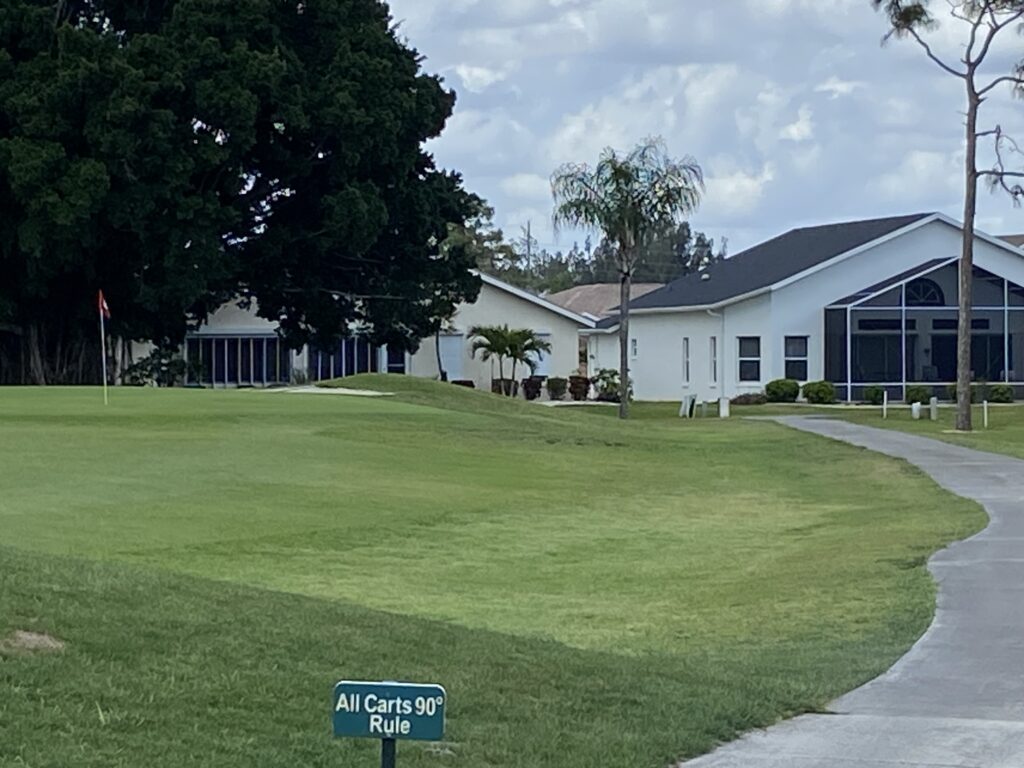
Hole No. 5 looks like an easier hole to complete, but you would be incorrect. The elevated green is difficult to reach and even more difficult to hold once your ball does land on it. Many of the greens in Sabal Springs are laid out with all sides of the greens sloped downward. A rolling ball can be your worst enemy on many greens here. This hole is also home to Sabal Spring’s only banyan tree.
Hole No. 6 offers more water that needs to be crossed. But this hole is most worrisome because of one particularly deep sand trap at the right front of the green. If any of you have ever watched a Sunday afternoon PGA or LPGA event on TV, you know how easy those folks make getting out of a sand trap look. It is nowhere as easy as they make it appear. If you were to listen closely, you could probably hear the echoes of the rantings of many a harried golfer still lingering in the area surrounding any sand trap on the course.

Hole No. 7 is the king of sloped greens. This hole is only 110 yards from the white tees, but it is the sixth-most difficult one here for all player levels. Probably the only reason that golfers like approaching this hole is that it is the first and only restroom on the golf course.
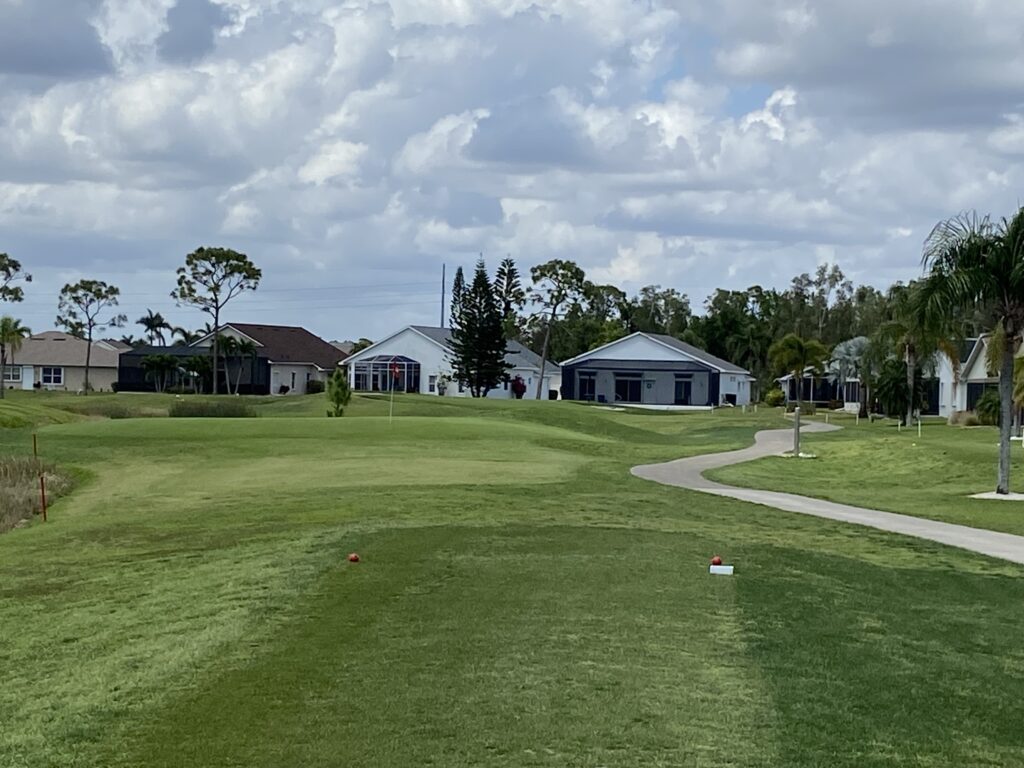
Hole No. 8 and Hole No. 9 are situated in a somewhat parallel configuration, which can cause some minor delays. Because the green for No. 8 is beside the tee boxes for No. 9, players ready to tee off on No. 8 must wait for the golfers ahead of them on No. 9 to clear their tee box before hitting their balls. Safety is always a concern when playing this game called golf and it is taken very seriously by all of the folks who play it.
This course has very narrow fairways. Houses are very close by. If you live adjacent to the course, you may have heard the sound of a golf ball hitting your roof. Be assured, it is never a golfer’s intent to do that ever, but it happens occasionally. It is every player’s worst nightmare to hit anything other than the fairway or the green.
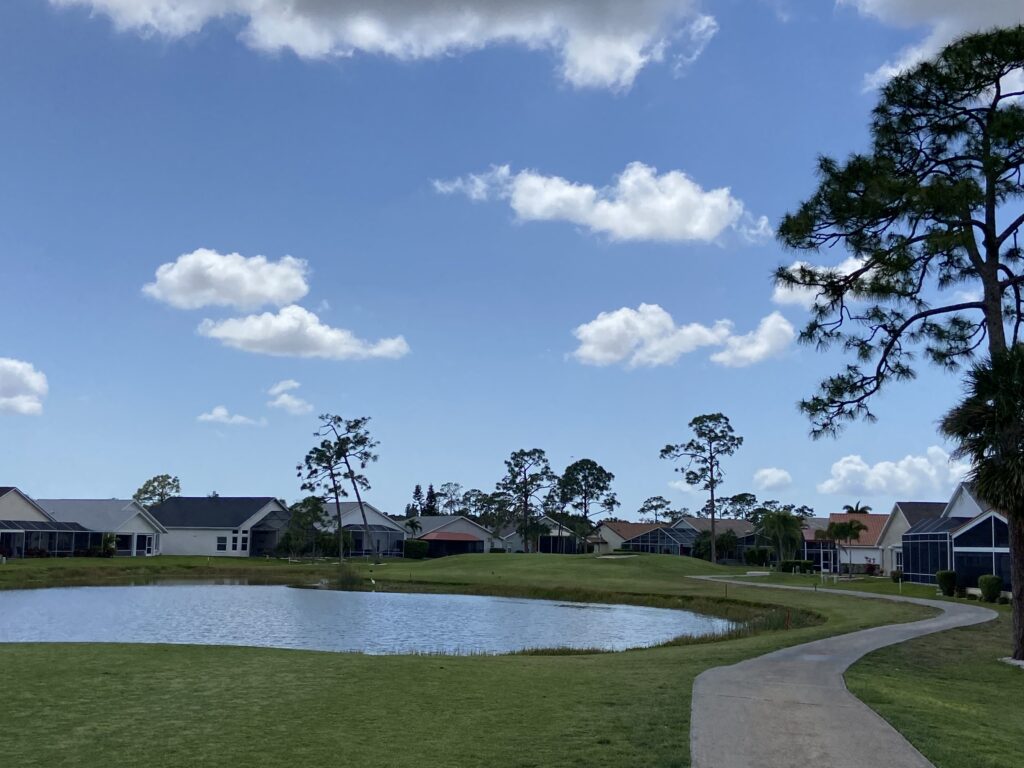
Hole No. 10 … most everyone who ever plays this course would call this hole their worst nightmare. Gentlemen playing from the blue or white tees have to traverse two lakes before arriving to the area surrounding the green. The ladies and the men playing from the gold tee boxes have one lake to conquer. In any case, this is the perfect place to explain what a “drop zone” is. In the event that a player goes into the lake with their shot, there are designated areas marked with a piece of cement in the ground and a circle spray-painted on the surrounding grass, which indicates that area within the circle is to be used to “drop” the ball for the ensuing shot to be taken. These drop zones help to speed up play and take some of the angst out of the ball going into the lake.
Hole No. 11 is a shortie, but it has water, sand, hills, and dales. It has everything everywhere. It used to have a pine tree, but a disease has attacked the pines on our golf course. We have started a tree fund to collect monies to plant trees to replace the many that we have lost. Many of these new small trees have been funded through donations generally made in honor of someone who has passed as a memorial. (If anyone is interested in making such a donation, please contact Mark Richards at (239) 989-7393 for more information.)
Hole No. 12 is another par-3, replete with more water and more sand traps.
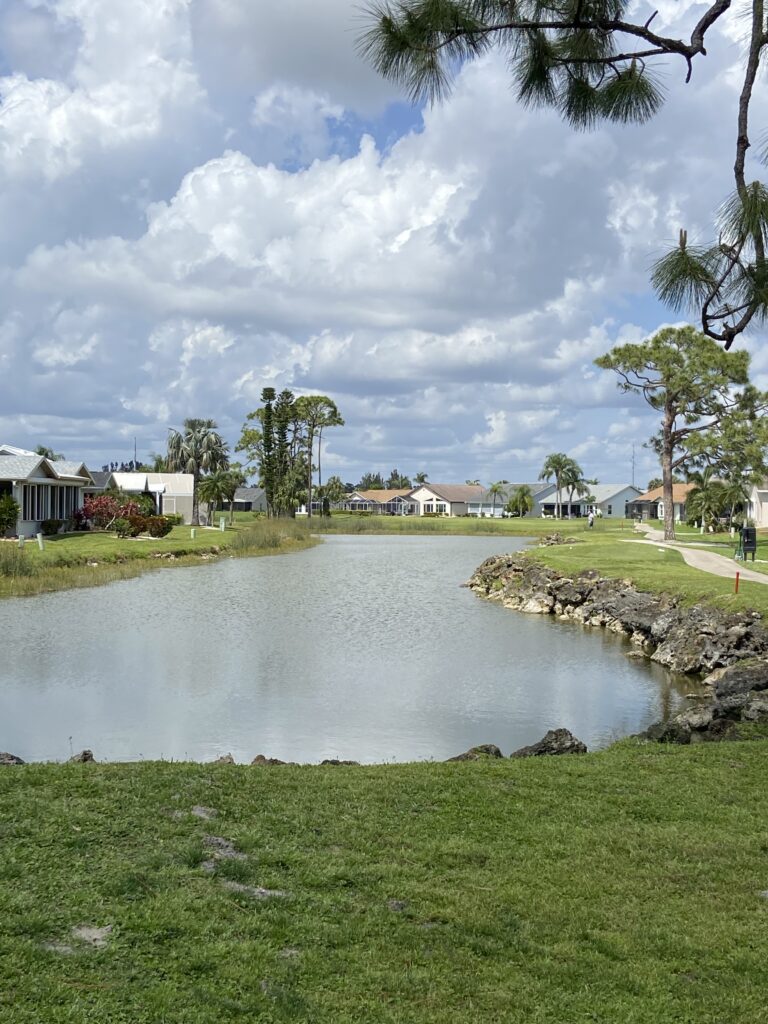
Hole No. 13 is a dogleg left with water, sand, and the dogleg, which makes this hole challenging. Add a drop zone area and we have all the bases covered on just this one hole.
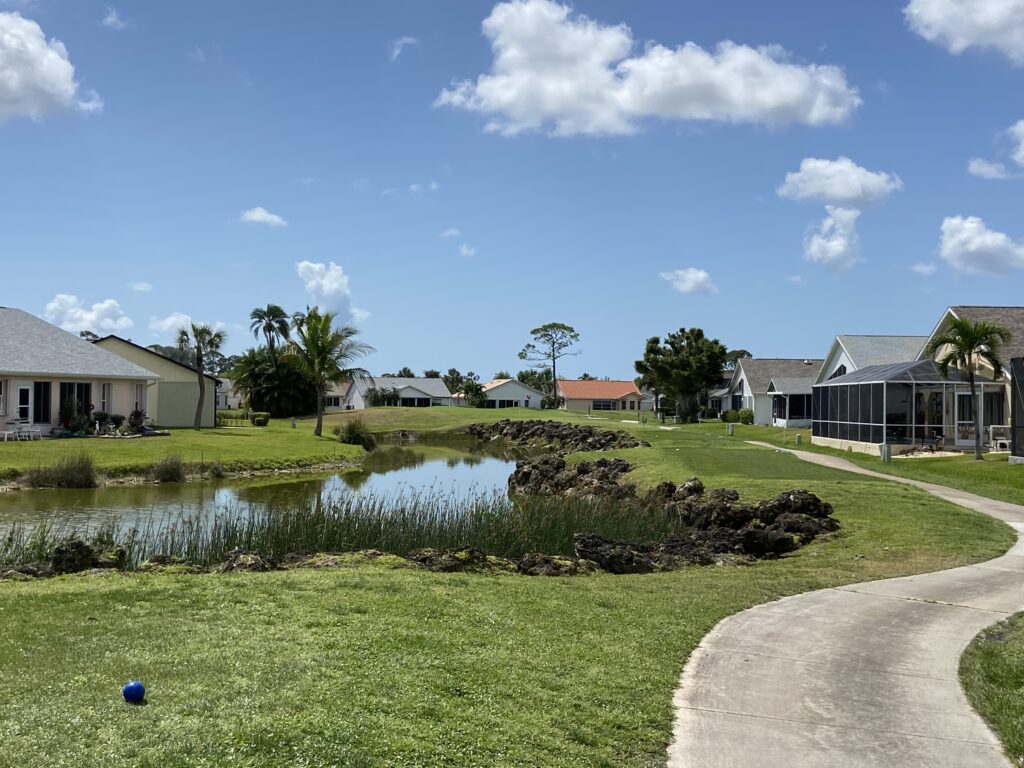
Hole No. 14 has a hidden pond on the left side of the green and a very long sand trap on the right side. Add the huge tree in the backyard of a residence and this hole quickly becomes tricky. By the way, that tree has a very large appetite for eating golf balls. They seem to go in and never come out.
Hole No. 15 and Hole No. 16 are lined on the right side by swales. The edges of the swales have red lines spray-painted beside them to denote a “hazard line.” Specific rules of play are used where hazard lines are present. Throughout the course there are other red posts that also indicate a hazard line area. White posts on the golf course mark the out of bounds areas. Should your ball land outside the imaginary line between two white posts, you must take a penalty stroke to bring that shot back onto the course in bounds.
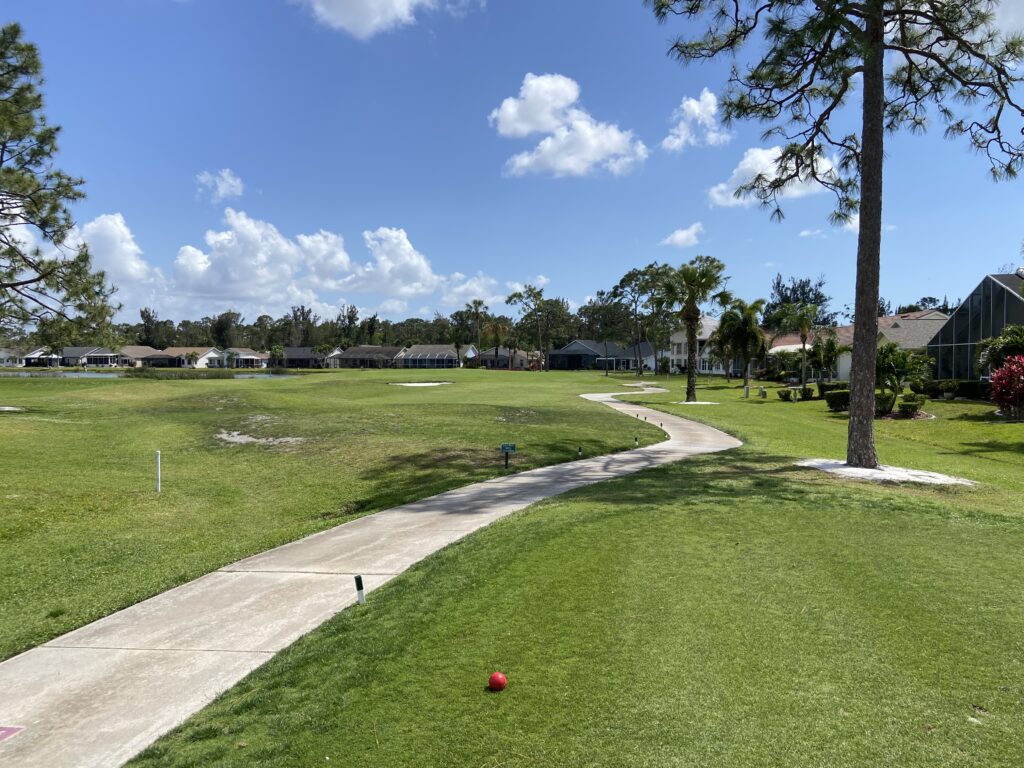
Hole No. 17 is a small par-3 hole, which brings you close to the most beautiful and spectacular sight on our golf course. The “big lake” with all of its shorebirds, occasional alligators and especially impressive you can often see a Bald Eagle, with our stunning clubhouse as a backdrop. Turn the corner and hole No. 18 is upon you.
Hole No. 18 … what a sight! The widest fairway by far with to-die for scenery is a great way to end a round of golf with your friends. But the best is yet to come … the 19th Hole, a golfing tradition for sure. A hot dog and your favorite beverage in the pub after a round so that you can brag about your great score of the day, your spectacular shot out the bunker, the chip-in from 30 feet, the avoidance of water on every hole and maybe your age.
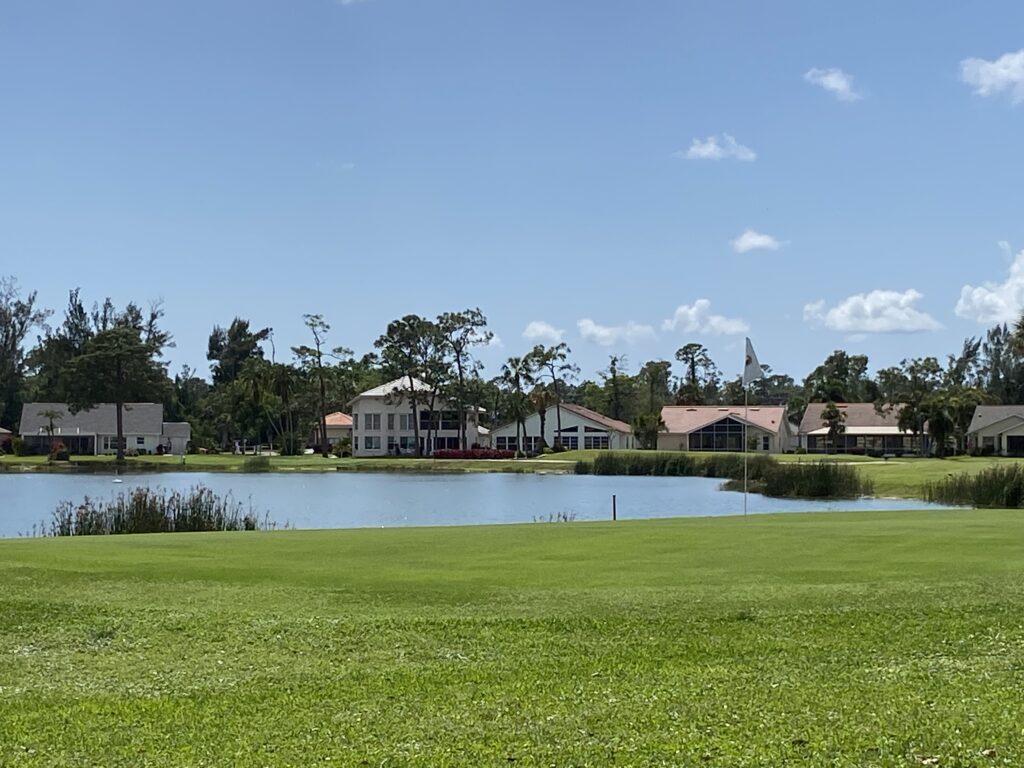
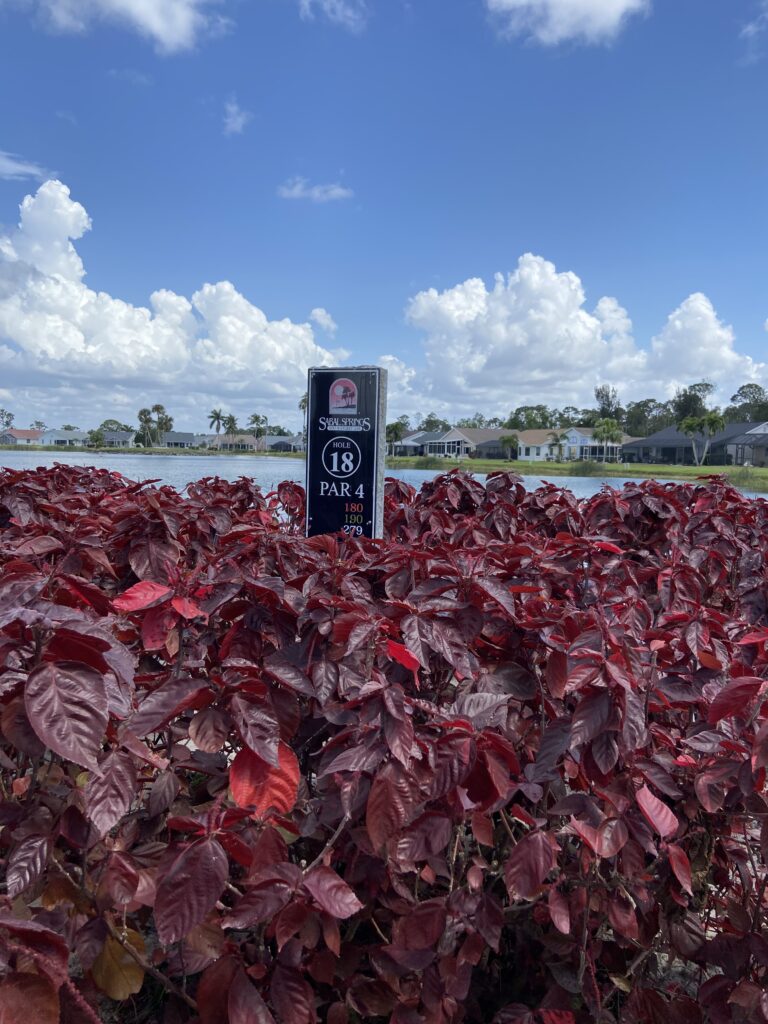
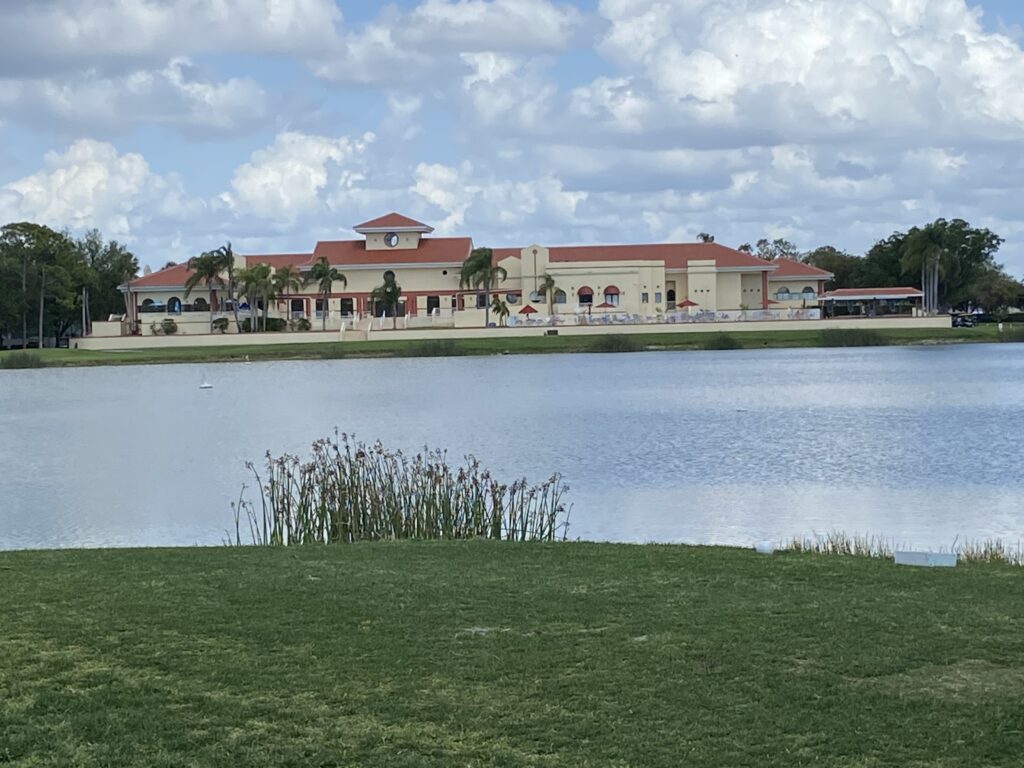
As was mentioned earlier, safety for homeowners, guests, and golfers alike is foremost in the minds of all concerned here in Sabal Springs. Often folks ask during association meetings, on Facebook, or just in conversation why the golf course cannot be utilized for walking, jogging, biking, or just golf cart rides when not in use. We have all have witnessed folks disobeying our regulations prohibiting this behavior. Perhaps after seeing how close our cart paths are to the adjacent homes, you can understand more fully the expectation of privacy that those homeowners have after the course is closed for the day. They want to sit on their lanais like the rest of us without being disturbed by folks walking by while they may be entertaining friends for dinner. And certainly everyone understands the dangers involved in daytime use while golfers are on the course, although we all have witnessed the occasional dog walker or pleasure rider in the afternoons.
If you are inspired to pick up the sticks, please contact the pro shop to learn more, book a lesson, or join either the men’s or ladies’ golf leagues.





